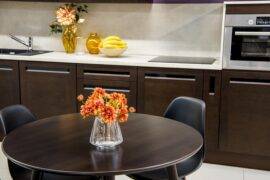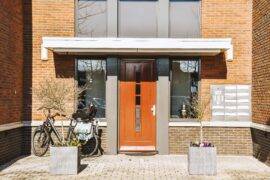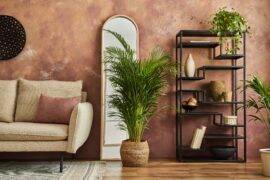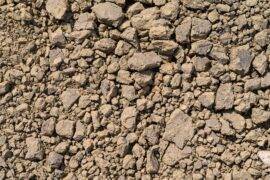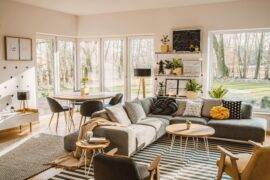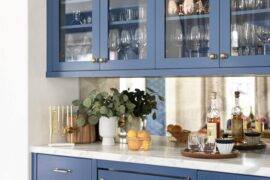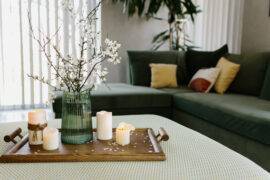For years the earth has been performing a disappearing act that no magician or illusionist could compete against. Criss Angel and David Blaine in all their glory from the streets to the late night stage cannot begin to dissect the science behind the missing soil and rock particles. Carried away by the invisible arms of wind and silently deposited for new eyes to see. Deforestation and other methods are the performing artists in this magic trick of “supernatural” capabilities. It’s a show we all have experienced, ticket free, and with climate change the topic has become a passionately fierce subject as we wonder where has the wind taken our soil and rock?
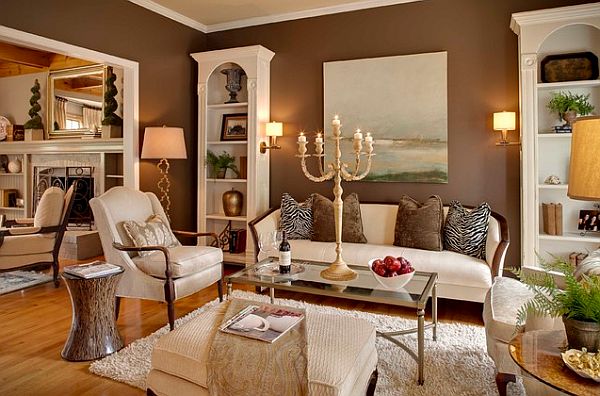
Today the mystery comes to an abrupt conclusion, for the wind has showed us where it has transferred the soil. From high atop mountains or by the streamside, erosion occurs as it is carried it into our homes, but not as you think. Not as the endless amount of muddy and dirty footprints that could rival that of Mike Rowe’s after a long day cleaning out some of the industry’s dirtiest jobs. No, the soil has been the inspiration behind our brown décor. The rich, all-inclusive color of soil whose color ingredients include red, blue and yellow is a recipe that bears all the components of the primary colors making it the perfect color to match any other color with.
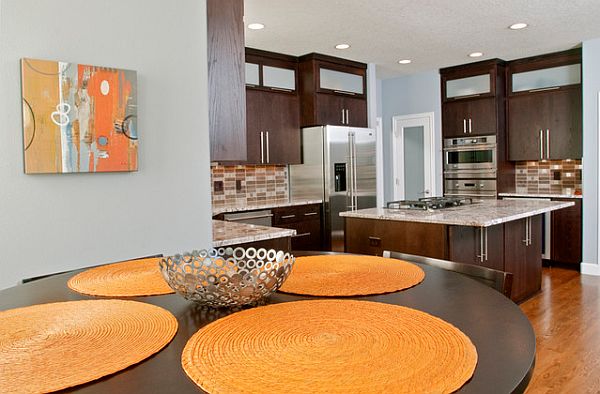
When using light brown, it enables all your other elements to shine, whereas when using dark brown, that is the element that shines. It is a calming color, this color of soil and chocolate. It comforts us, and gives us assurance and peace. To get to that point, however, we have to jump the hurdle of the lack of appreciation brown often provokes. If I were to tell you that I was revamping the look of my living room and you asked what theme or color palette I was going to use, the answer brown would make you wince a bit would it not? But that’s boring! It’s blah!
I’m here to help you see that when it’s not muddy tracks on your freshly scrubbed kitchen floor, brown is beautiful.
Step One: The Other Famous Wood
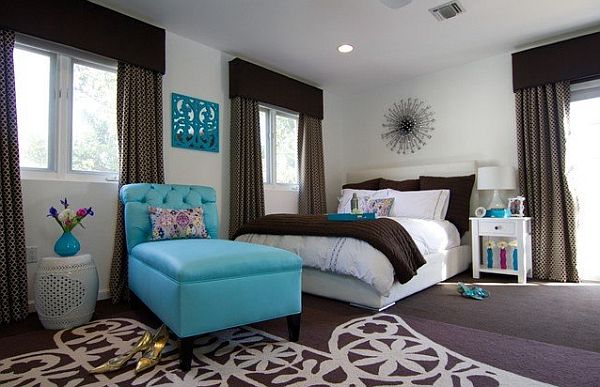
Did you know wood is brown? It’s not a rhetoric question for with all our processed woods that come in hundreds of colors it’s easy to forget the origin and roots of our wood. Choosing the wood, stain and finish of your wood flooring can be an arduous task. Not only do you want something to fit in your design scheme, but also you need something that will work well under the traffic of your pets, high heels and rambunctious family and guests.
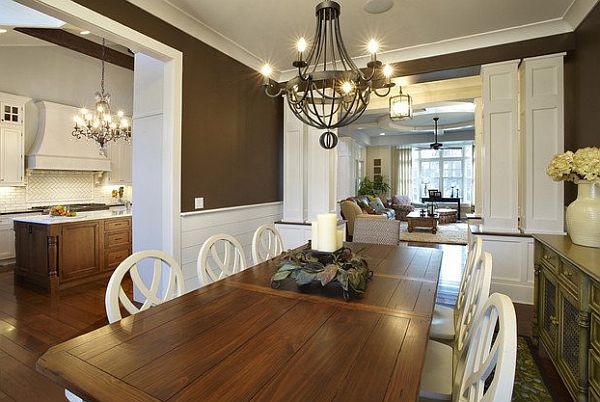
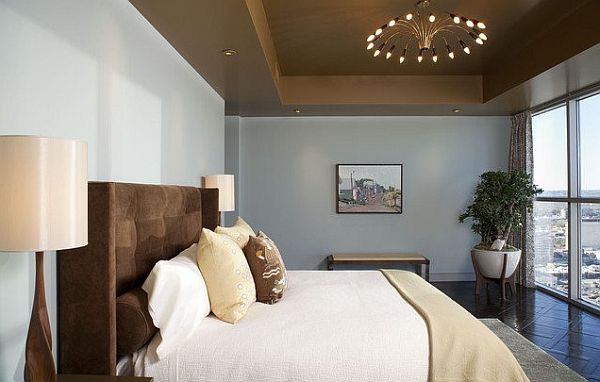
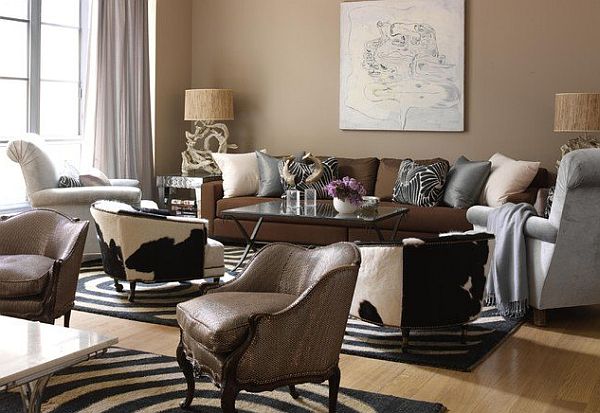
Hickory and Brazilian Cherry are very forgiving floors as well as Red Oak, a great option for its resilience against scratching. If kept close to their natural hue, you have a great selection to begin picking from to instill some brown on the floor.
Step Two: Letting Brown Walls Speak
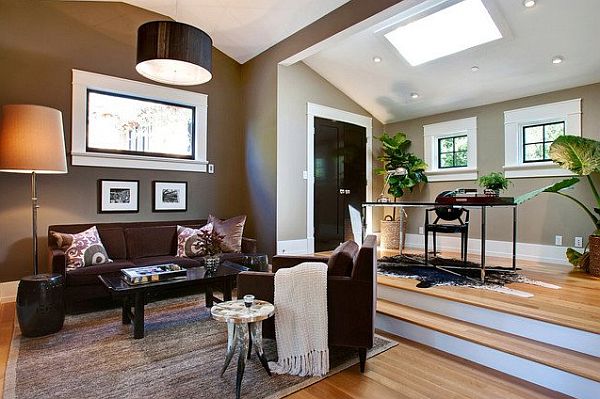

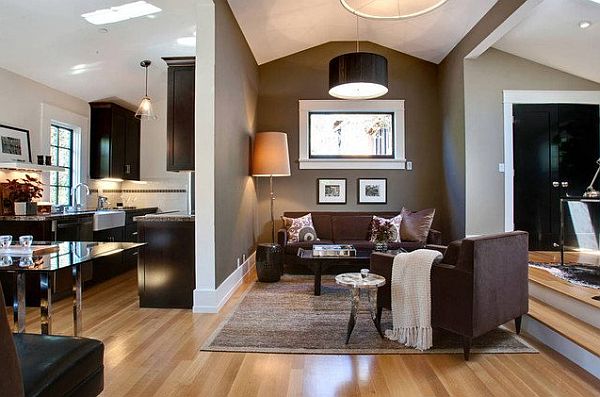
A brown wall neutralizes a room but can easily add a hint of mystery. A deep brown wall with white trimmings will invite you hands to caress its richness as the surroundings become vivid against a backdrop so lush. Like a freshly brewed cup of coffee, your wall can entice and welcome, rather then be off-putting by clashing colors or filled with beautiful things that say absolutely nothing but, “I’m pretty.”
Step Three: Browning the Meat of Your Room
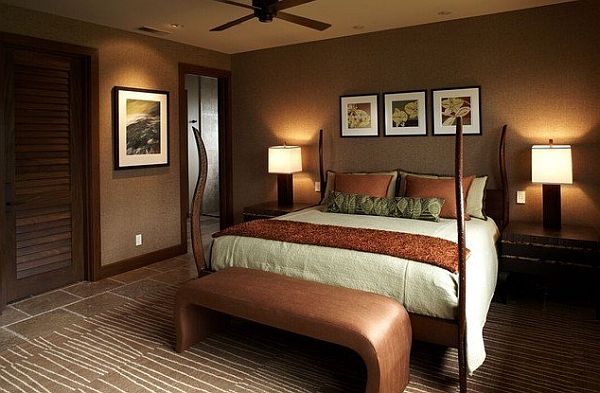
The main course of an omnivores meal is the meat. But before it gets plated it gets marinated and goes through the pan process of browning. Something we are going to do in our living room today. Browning the furniture and accessories to the exact color. Red Brown, Peru Brown, Sand Brown, Chestnut, Russet, they all blend well with many colors. Dark brown walls with tiffany blue chairs and pale brown accents. Black and brown. Yellow and brown. Orange and brown. The list goes on all blending harmoniously with brown.
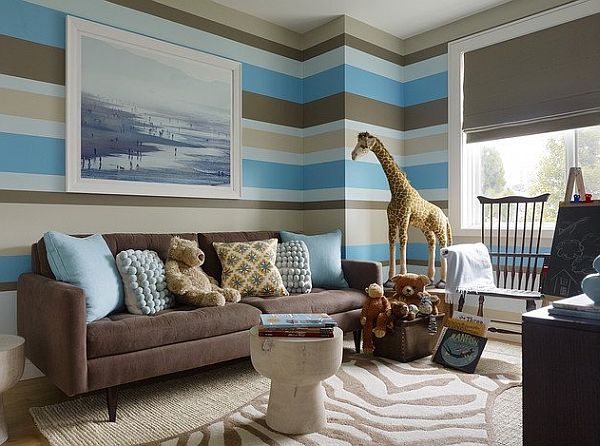
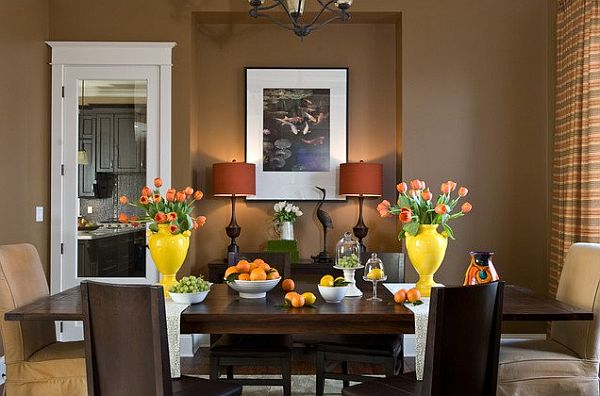
Throw in some more furniture like bookshelves, writing desks, coffee tables and end tables all in wood with complimenting finishes and see for yourself, that brown is beautiful. Believe in the color, embrace it and allow the winds to bring the soil into your home via the bountiful shade of brown.
